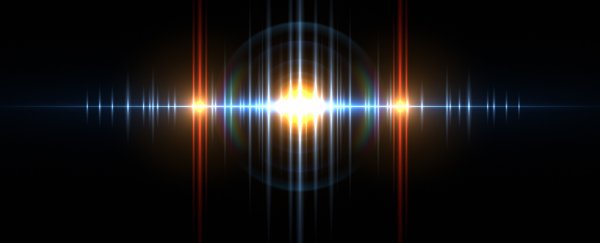Humans have an uncanny knack for finding interesting new ways to get off their faces. This usually involves sniffing, snorting, licking, chewing, or even injecting various substances.
In a new study, researchers examined a relatively new way to alter minds, which makes use of digital sounds to feed conflicting frequencies into each ear. By tuning in to these 'binaural beats', some people report they can drop out, reduce pain, enhance memory, and ease anxiety and depression.
To determine what kind of crossover might exist between the use of more traditional psychoactive substances and experimentation with binaural beats, a team of researchers from Australia and the UK dug into the 2021 Global Drug Survey, a survey of more than 30,000 individuals from 22 countries.
They found around 5 percent of those surveyed had dabbled with the use of binaural beats sometime in the last year. Of those, just over one in ten were doing it purely for recreational purposes.
Most users were in their late teens to early 20s, had used prohibited substances such as MDMA or cannabis, and were from the US, Mexico, UK, Brazil, and Poland.
Beyond seeking a high, their reasons for experimenting with binaural beats were as varied as they were.
"It's very new, we just don't know much about the use of binaural beats as digital drugs," says lead author Monica Barratt, a social scientist from RMIT University in Australia.
"This survey shows this is going on in multiple countries. We had anecdotal information, but this was the first time we formally asked people how, why, and when they're using them."
The phenomenon of binaural beats itself isn't new, first appearing in the literature as far back as the mid-19th century. But thanks to the ease with which people can now spin a trippy tempo made of conflicting frequencies and share them online, binaural beats are becoming an increasingly popular art form.
Theoretically, binaural beats are thought to induce changes in the brain, thanks to the way our sensory system interprets different low-end frequencies when they are fed separately into each ear.
Listen to a 400 hertz tone in one ear, for example, and a 440 hertz tone in the other, and your brain will interpret it as a single, droning buzz of 40 hertz located somewhere inside your skull.
This interpretation requires more than just our peripheral auditory machinery – it makes use of a complex of brainstem hardware buried deep inside our heads, prompting neurons far and wide to synchronize into wave patterns associated with relaxation.
That's the theory. While there are some studies that encourage further investigation of binaural beats as a means of easing acute anxiety, others argue the benefits of binaural beat therapy – at least when it comes to altering moods and mind – remain to be seen.
Scientific skepticism aside, there's no shortage of experimenters willing to give binaural beats a go. Which for 12 percent of those who reported listening to them recently, includes attempting to replicate a psychedelic experience.
"Much like ingestible substances, some binaural beats users were chasing a high," says Barratt.
Any potential concerns that listening to mind-altering music might be a stepping stone for substance abuse later weren't supported by the study. If anything, most of those hoping for a change of consciousness were already using other illicit drugs.
What's more, there were plenty of other reasons people were exploring a binaural soundscape, according to Barratt.
"Many people saw them as a source of help, such as for sleep therapy or pain relief," she says.
Whether so-called 'digital drugs' generate more hype than highs is a job for future researchers to work out. For now, the statistics give us a good starting point for keeping track of the behaviors of those self-medicating – or seeking pleasure – through alternative means.
This research was published in Drug and Alcohol Review.
